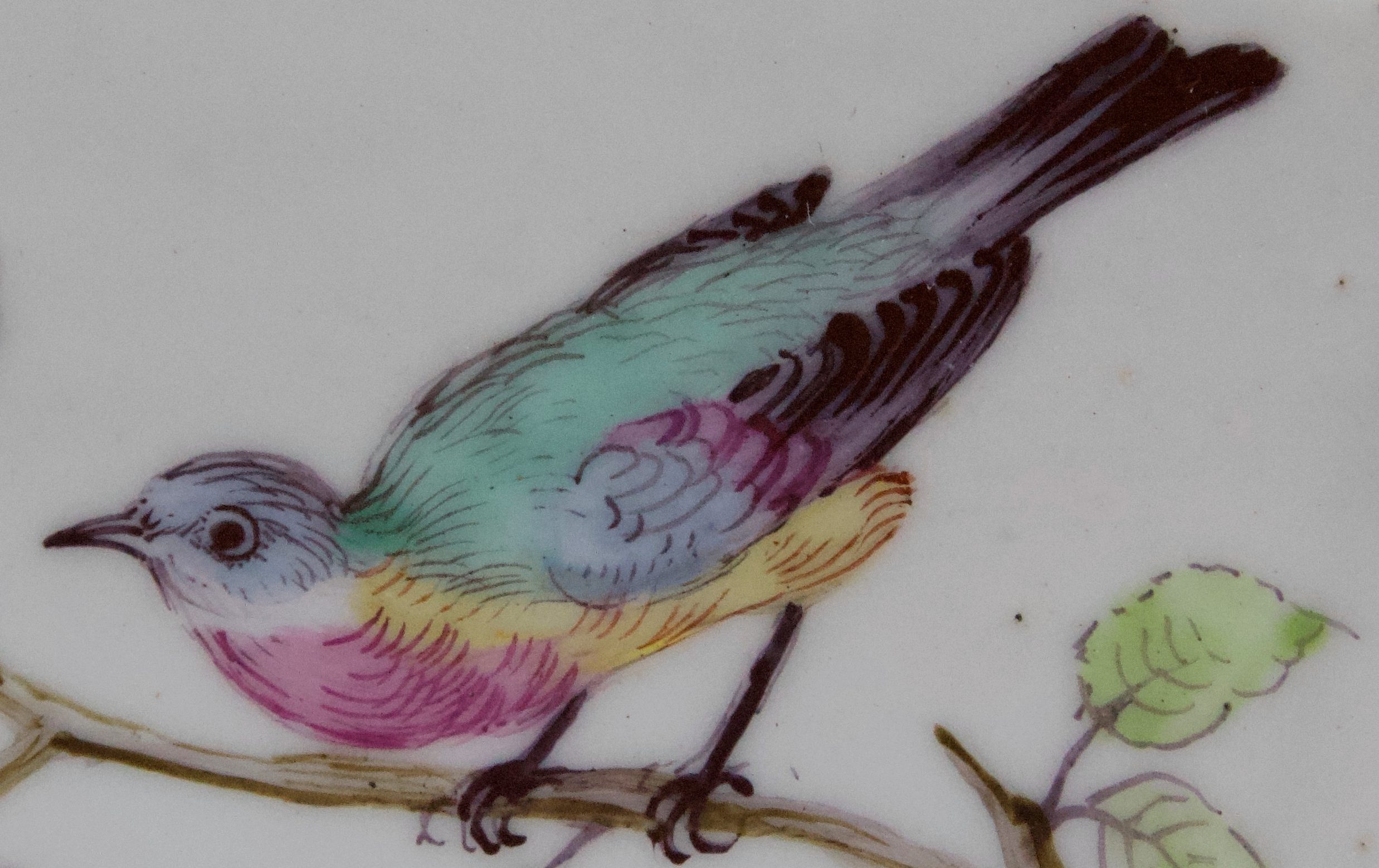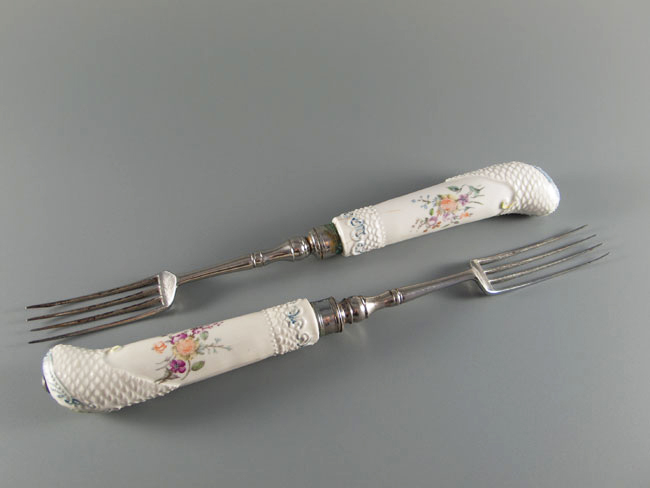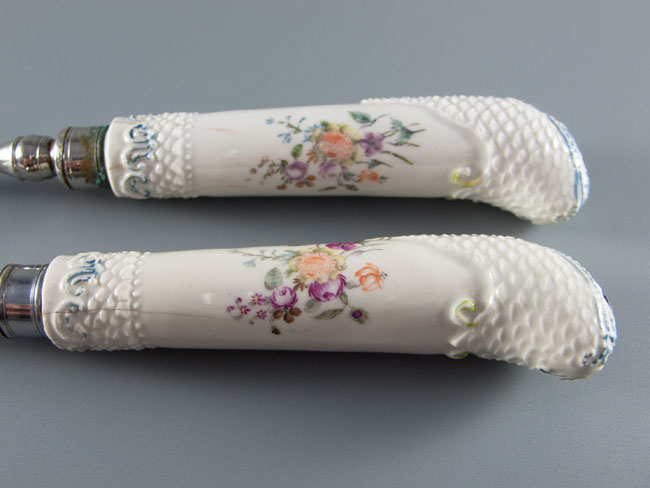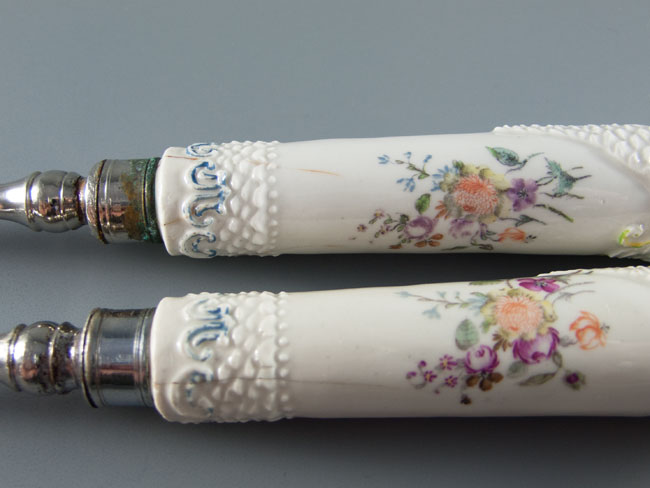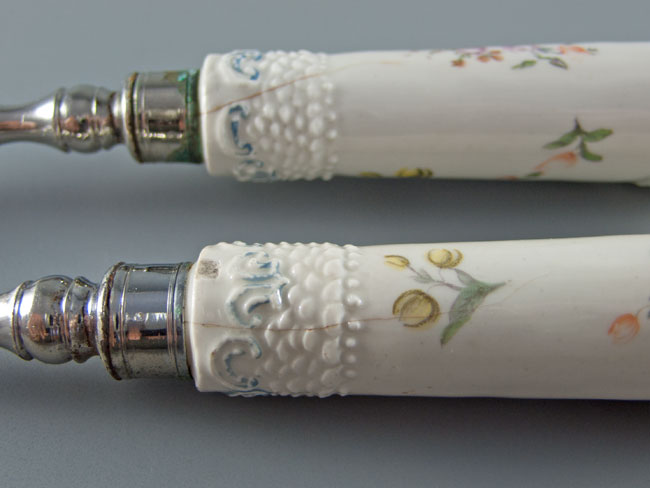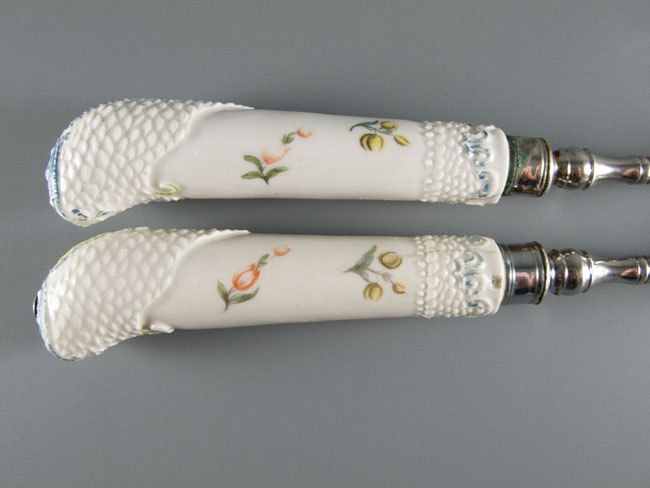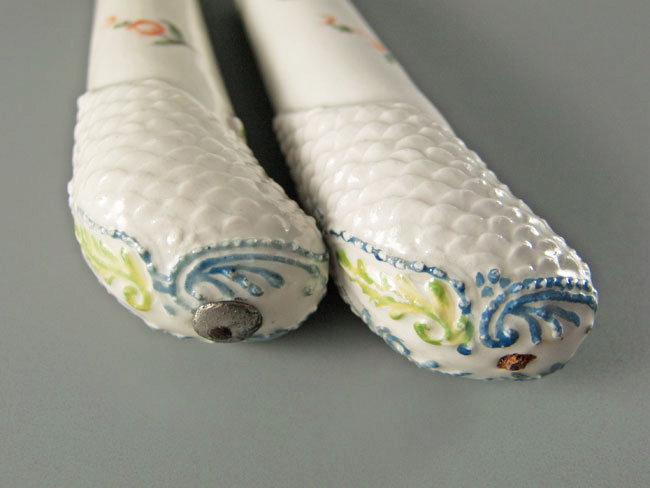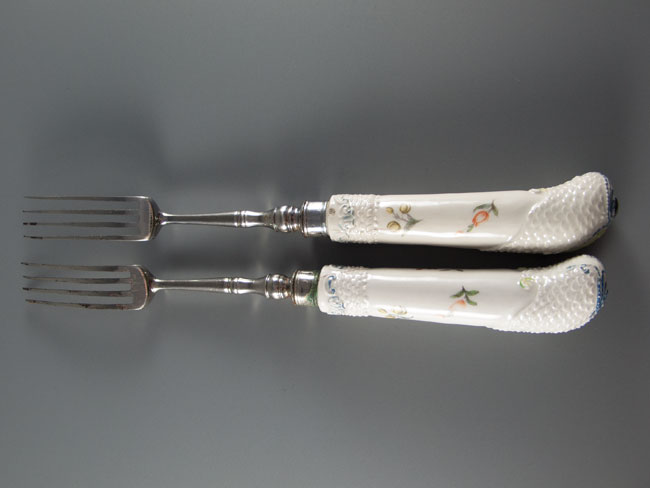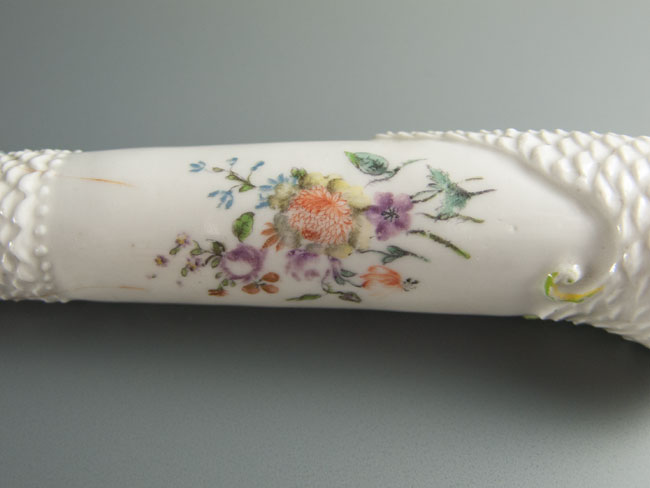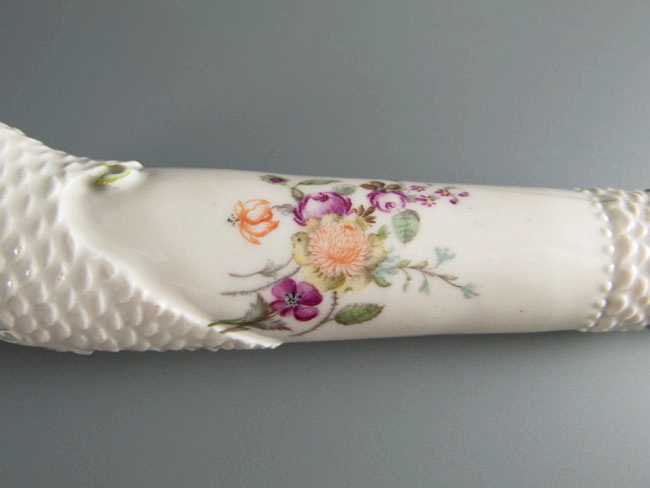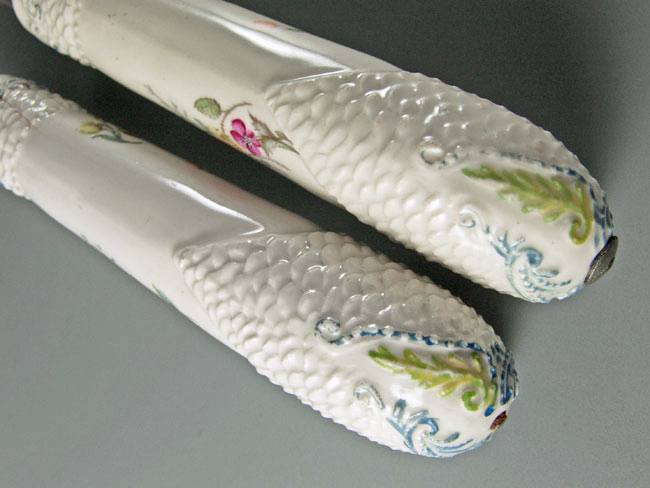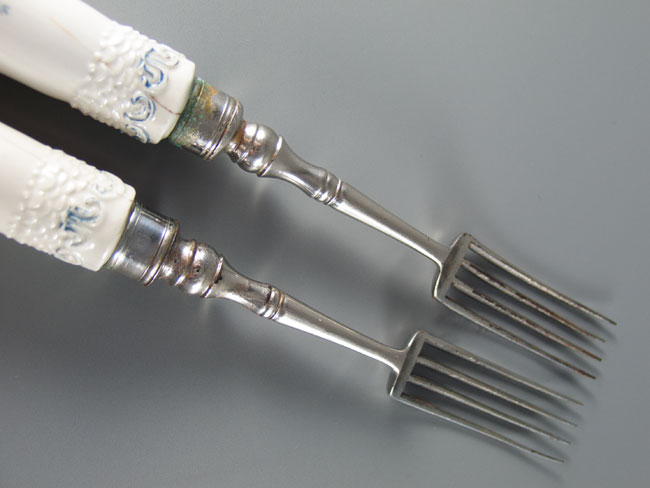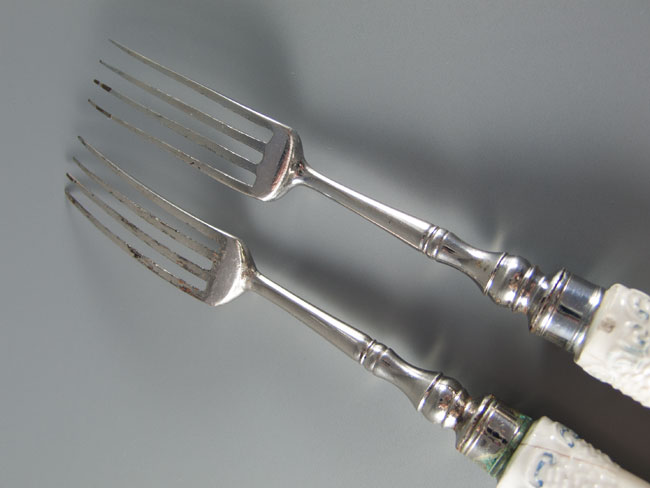Two very rare Schrezheim Forks, circa 1765
These two Schrezheim porcelain pistol-grip hafts are decorated with scale moulding and finely painted European flower sprays and sprigs. Areas of the moulding are picked out in blue enamel, with raised green and yellow leaf decoration at the ends. The four-tine forks with baluster stems.
Provenance: An English Private Collection.
Condition: One fork has four hairlines and the silver cap is lacking to the end of the haft. There is some tarnishing to the ferrule. The other fork has three hairlines and a small chip. The enamel painting is especially detailed, and the scale-moulded decoration is crisp.
Dimensions: Length 21 cm (including tines)
On April 12, 1758, the prince’s office in Ellwangen authorised the widow Prahl to set up a porcelain factory. Joseph Jacob Ringler, an experienced arcanist from Vienna, managed the company until the beginning of 1759, but it had to close at the end of that year. Johann Baptist Bux had had the privilege to run a ‘porcelain factory’ in Schrezheim since 1752, however, in the first few years only faience was produced there. In 1761, with the help of the painter and arcanist Johann Andreas Bechdolff, the production of ‘real transparent porcelain’ succeeded, albeit without much economic success. In 1773 another arcanist, the French Louis Victor Gerverot, resumed operations on behalf of the Dutch. After only a two-year lease, he left Schrezheim in 1775 and production ceased altogether.
Ref. Two forks from the same service are illustrated by Wolfgang Rothmaier & Eberhard Veit (page 182).
Porzellan aus Ellwangen und Schrezheim, 1758-1775, Wolfgang Rothmaier & Eberhard Veit (Geschichts- und Altertumsverein Ellwangen e.V., 2008). This catalogue accompanied the 250th anniversary exhibition held at the Schlossmuseum, Ellwangen, Germany, in 2008.
